Nebraska, where the Midwest’s heartbeat can be felt in every corner, holds a name that invites curiosity: “The Cornhusker State.” You may be asking, what is the real story behind this name? Stick with us as we dive into Nebraska’s past, peeling back the corn threads that tied it to such a distinct title.
Why Is Nebraska Called the Cornhusker State?
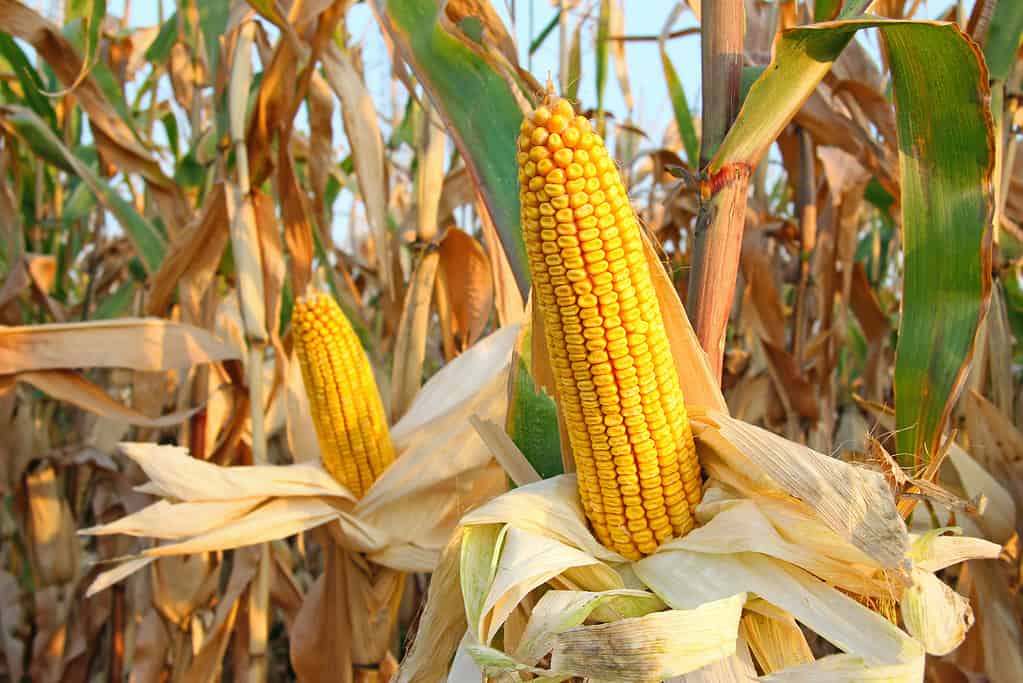
At the heart of this incredible transformation lies the thriving cultivation of a staple crop: corn.
©iStock.com/branex
Nebraska was originally a barren expanse. Yet, over time, it has undergone a remarkable shift into an agricultural powerhouse. At the heart of this incredible transformation lies the thriving cultivation of a staple crop: corn.
Origins of the Name
“Cornhusking” describes the manual removal of husks from corn. Before modern machinery, farmers hand-stripped these husks, highlighting their dedication to farming. The term “cornhuskers” gained fame when sportswriter Charles S. Sherman used it in 1900 for the University of Nebraska’s sports teams. By 1945, with its strong ties to agriculture evident, the legislature adopted “Cornhusker State” as its official nickname.
From Trees to Corn
Before the “Cornhusker State” nickname, Nebraska proudly called itself the “Tree Planters State” for its transformation from plains to tree-covered expanses. By the 1940s, corn dominated Nebraska’s agricultural scene. Recognizing this shift in 1945, the Nebraska Legislature replaced the “Tree Planters” title with the now beloved “Cornhusker State.”
Iconic Symbols: Celebrating Beyond Corn
Every state in the U.S. has symbols that represent its history, and culture. Let’s dive into some of the state symbols that give Nebraska its unique identity.
State Animal: White-Tailed Deer
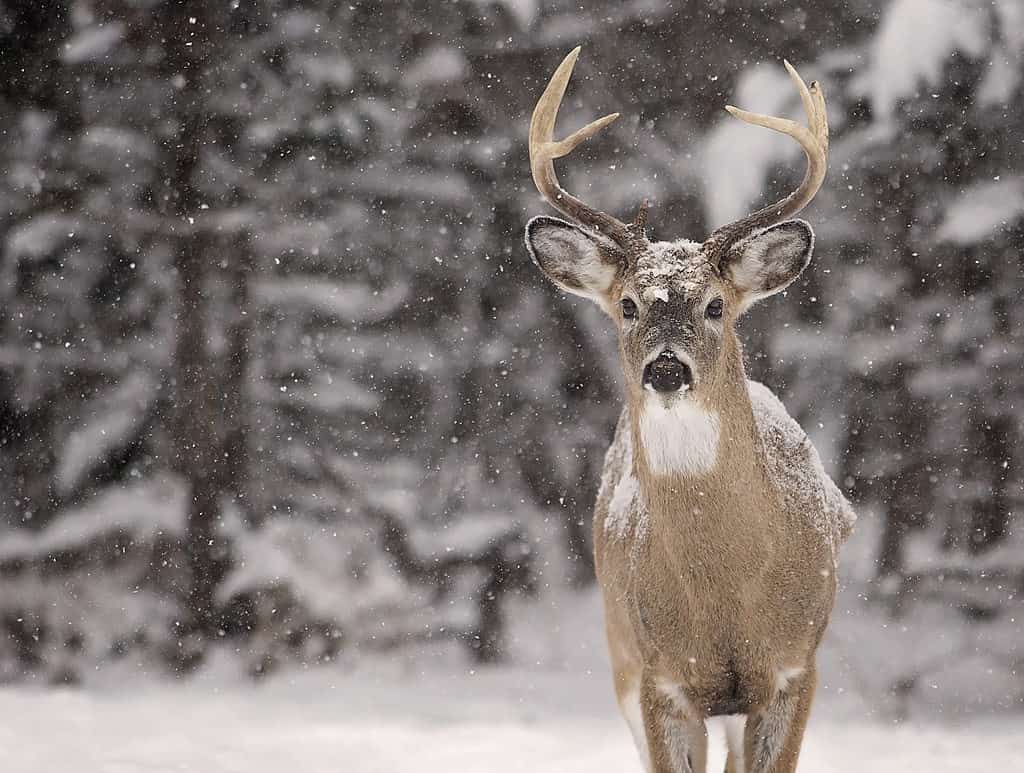
Nebraska’s state mammal, the white-tailed deer, is a symbol of the wild spirit of the plains.
©iStock.com/Lynn_Bystrom
Nebraska’s state mammal, the white-tailed deer, is a symbol of the wild spirit of the plains. Known for its white underside to its tail, it can be seen gracefully darting across meadows and forests throughout the state.
State Bird: Western Meadowlark
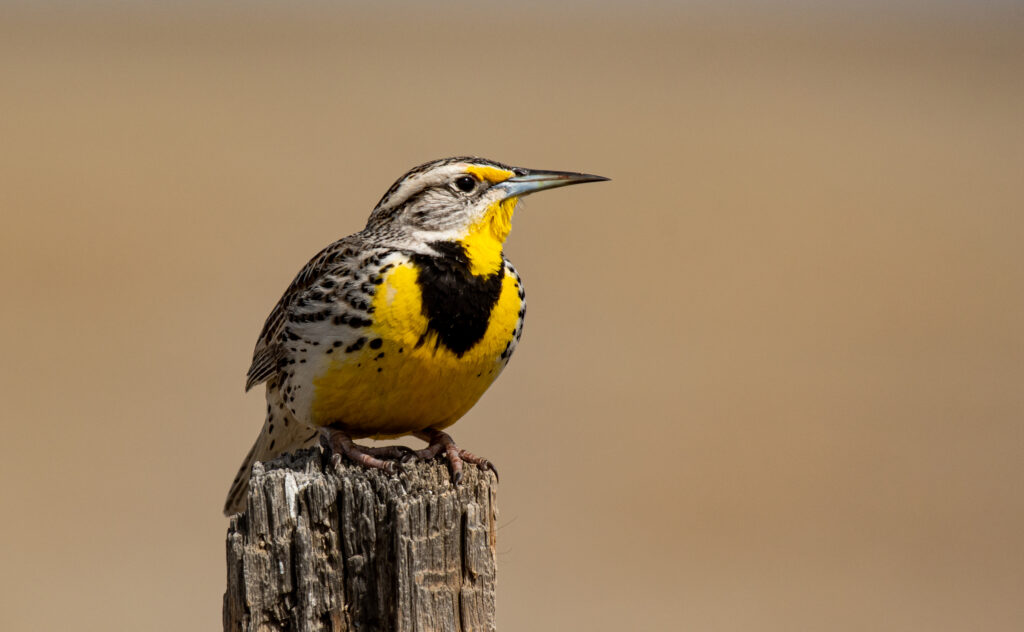
Nebraska’s state bird symbolizes the state’s connection to nature.
©Kerry Hargrove/Shutterstock.com
With its cheerful melody, the Western Meadowlark, Nebraska’s state bird, symbolizes the state’s connection to nature and the vast open spaces that define its landscape.
State Drink: Kool-Aid
Bursting with color and flavor, Nebraska proudly claims Kool-Aid as its official state soft drink. This iconic drink has a rich history, having been invented in 1927 by Edwin Perkins in the city of Hastings, NE. Kool-Aid was produced as a juice-like liquid called “Fruit Smack.” As time went by, it underwent a transformation, evolving into the beloved powdered mix known worldwide today as Kool-Aid.
State Tree: The Cottonwood
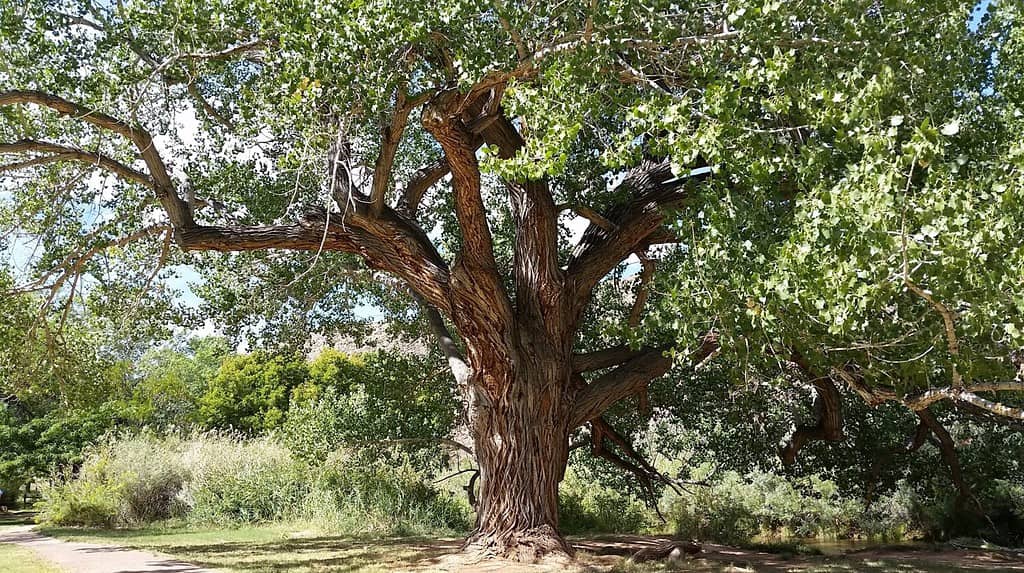
Able to thrive in Nebraska’s varied climate, the cottonwood is the state’s official tree.
©C Belt/Shutterstock.com
Standing tall against the backdrop of Nebraska’s skyline is the state tree, the cottonwood. Known for its resilience and its ability to thrive in the state’s varied climate, the cottonwood is a symbol of strength and endurance.
State Flower: The Goldenrod
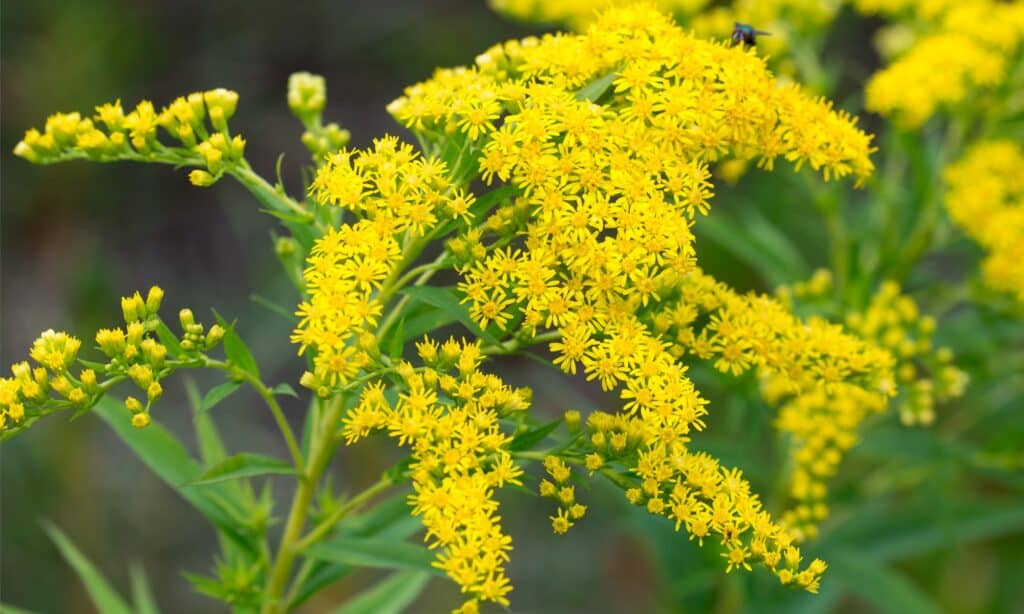
The goldenrod perfectly demonstrates Nebraska’s natural beauty.
©iStock.com/aga7ta
Brightening the Nebraska landscapes with its vibrant yellow hues, the goldenrod is the state’s official flower. Blooming from late summer to early fall, the goldenrod is a testament to Nebraska’s natural beauty.
Other Notable Features of Nebraska
Nebraska’s significance extends beyond cornfields and Kool-Aid. Let’s explore.
Natural Wonders
Nebraska is home to some unique natural wonders:
- Chimney Rock: An iconic landmark for pioneers traveling westward.
- Sandhills: The largest sand dune formation in the Western Hemisphere, these dunes cover one-fourth of the state and are a vital ecosystem.
College World Series
Every year, Omaha becomes the epicenter of college baseball, hosting the NCAA Men’s College World Series. The event draws fans from across the country, celebrating the best of collegiate baseball.
Buffett’s Birthplace
Omaha, NE, is the birthplace of Warren Buffett, the renowned billionaire investor, and philanthropist.
Rich Agricultural Legacy
Beyond corn, Nebraska is a leading producer of beef, pork, soybeans, and sorghum. The state’s agricultural output plays a significant role in feeding the nation.
Historical Sites
From Native American history to modern innovations, Nebraska is dotted with sites of historical importance:
- Fort Robinson State Park: A former U.S. Army fort and now a state park, it witnessed several significant events in the Western expansion.
- Stuhr Museum: Located in Grand Island, this living history museum offers a glimpse into pioneer life.
Carhenge
In Alliance, NE, there’s a unique monument called Carhenge which is a replica of England’s Stonehenge, made entirely out of old cars. It’s a quirky roadside attraction that captures the imagination of many visitors yearly.
The photo featured at the top of this post is © Nalaphotos/Shutterstock.com
Thank you for reading! Have some feedback for us? Contact the AZ Animals editorial team.






